NEW REPORT
The State of Threat Hunting
A new survey reveals the maturity of threat hunting capabilities in organizations of all sizes. See where you organization falls on the threat hunting maturity scale.

INTRODUCTION
As many SOCs struggle to cope with the rising security threat workload, more organizations continue to adopt threat hunting as an integral part of their security operations. They are discovering that proactive threat hunting can reduce the risk and impact of threats that might otherwise go undetected by traditional security technologies, all while improving defenses against new attacks.
Cybersecurity Insiders conducted the fifth annual threat hunting research project to gain deeper insights into the state and evolution of this security practice.
Key findings include:
- The top challenge facing SOC teams is detecting advanced threats, yet only 10% of practitioners feel “very confident” in their organization’s ability to uncover them.
- Thirty-five percent of SOC teams report the frequency of threats is increasing at a rate of 2x, and an estimated 38% of threats are missed.
- A third of security practitioners (34%) are unsure about the financial impact a breach would have on their organization.
- Nearly half of respondents (46%) don’t have a way to determine where to focus their threat hunting efforts, and nearly a quarter (24%) don’t have a way of determining which assets are the most critical.
- The top 3 most important threat hunting tool capabilities are threat intelligence (62%), automatic detection (57%), and integration and normalization of multiple data sources (47%).
We would like to thank Intrusion for supporting this important research. We hope you find this report informative and helpful as you continue your efforts to protect your organizations against evolving cyber threats.
Thank you,

 Holger Schulze
Holger Schulze
CEO and Founder
Cybersecurity Insiders

SOC CHALLENGES
Cybersecurity professionals are facing increasing challenges due to a worsening threat environment and limited resources to effectively protect their IT environment. Fifty-two percent of cybersecurity professionals consider detection of advanced threats to be the top challenge facing their SOC. Lack of expert security staff to assist with threat mitigation is a close second (47%), followed by too much time wasted on false positive alerts (40%).
Which of the following do you consider to be top challenges facing your SOC?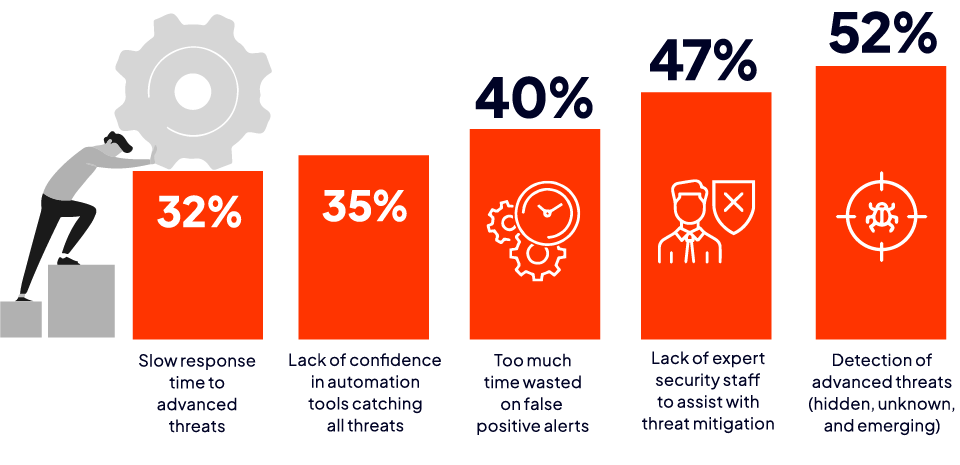
CONFIDENCE IN ABILITY
It is essential that cybersecurity teams have the skills and tools to detect a variety of different threats. Sixty percent of respondents are at most only moderately confident in their team’s ability to uncover advanced threats. Additionally, 62% of cybersecurity professionals feel their SOC does not spend enough time searching for advanced threats.
How confident are you in your security team’s ability to uncover advanced threats?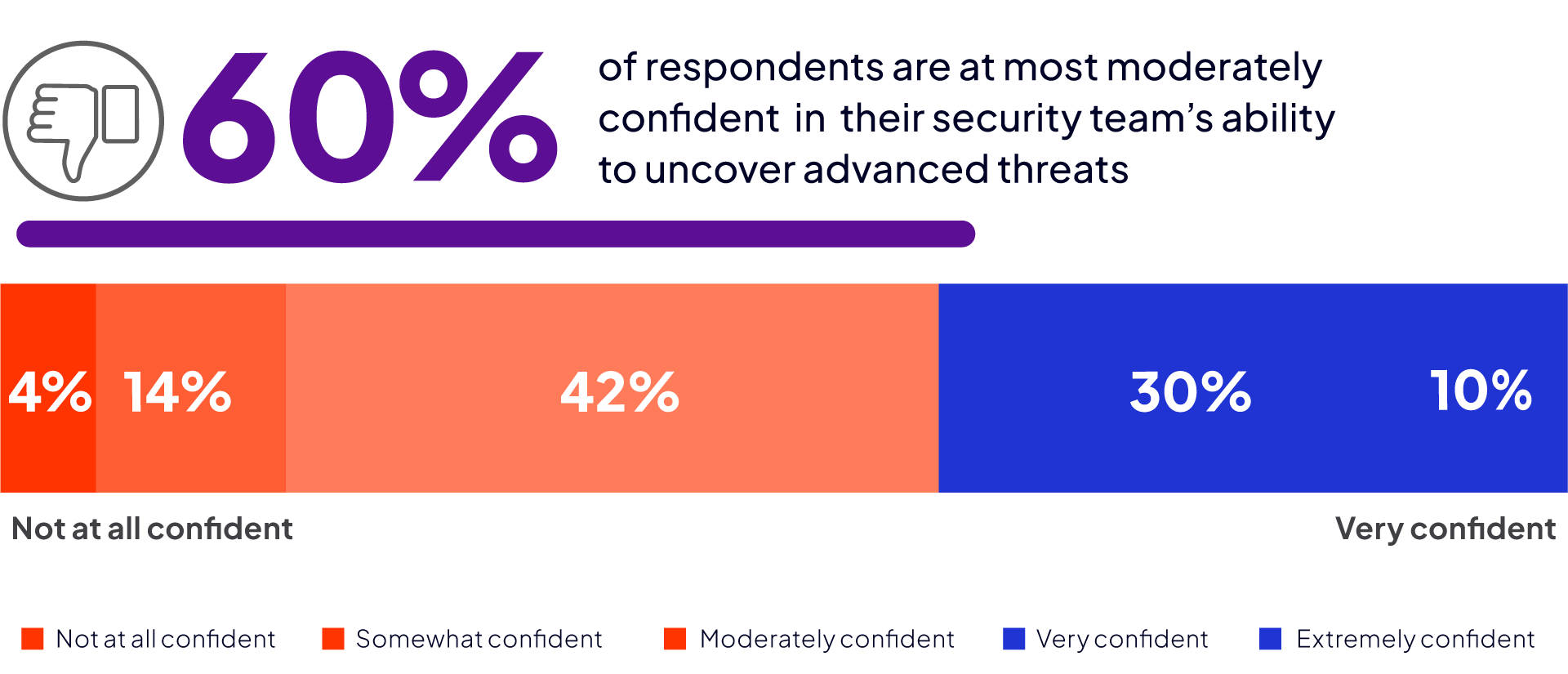
Do you feel enough time is spent searching for emerging and advanced threats at your SOC?
VULNERABLE ASSETS
It is critical for cyber teams to focus scarce resources on vulnerable assets and identify where to target threat hunting efforts. A majority of organizations (76%) say they can determine which of their assets are most likely to be attacked; however, only 54% of organizations can effectively determine where to focus their threat hunting efforts.
Do you have a mechanism for identifying vulnerable assets?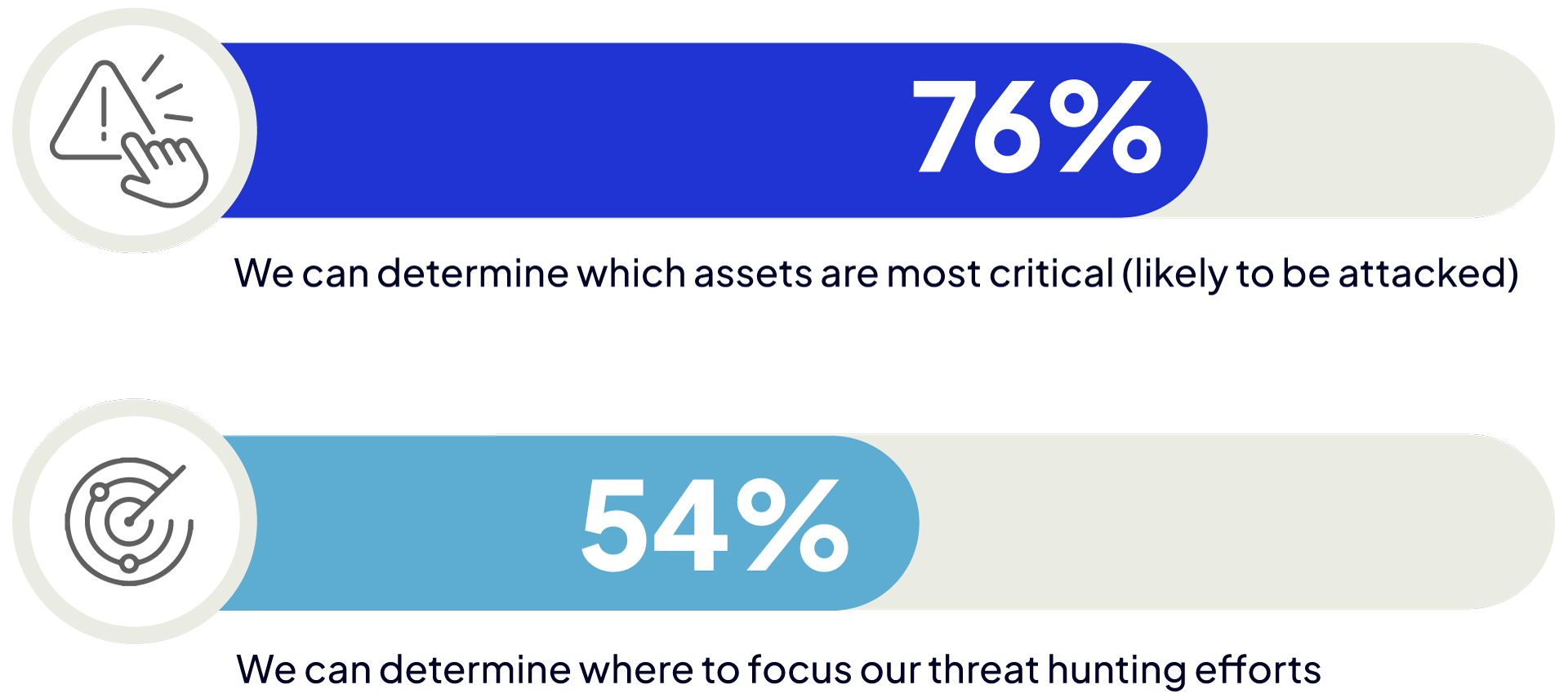
RISING THREAT LEVELS
In addition to a rise in the complexity and sophistication of cyber attacks, the number of threats facing cybersecurity teams is increasing as well. Over half of organizations (59%) observed an increase in threats by a factor of two or higher compared to the previous year.
Which of the following best describes the frequency of security threats faced by your organization compared to the previous year?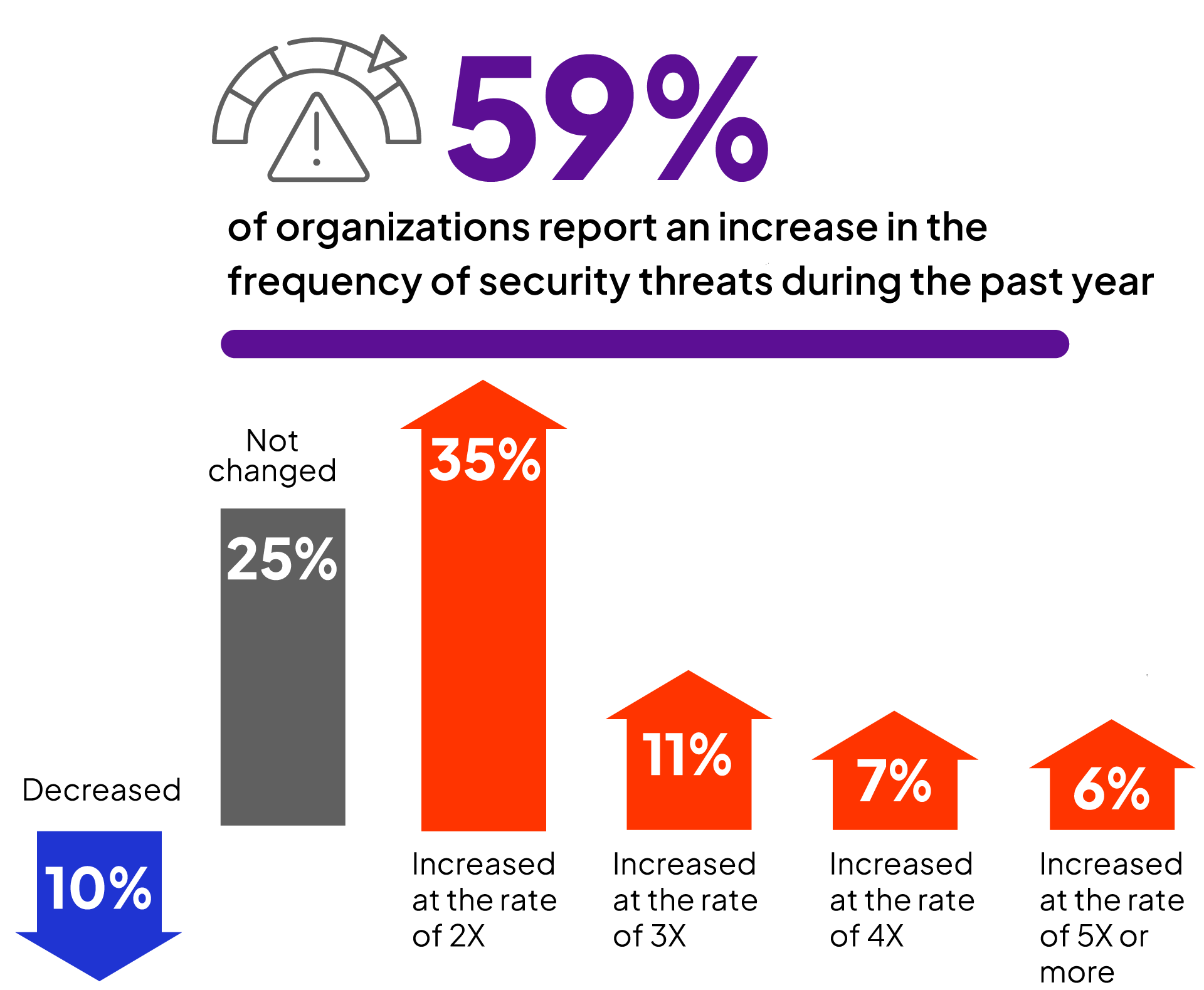
SECURITY THREATS MISSED
Many organizations in our survey are responding to attacks only after they have become active. This reactive posture partly contributes to more than a third (38%) of security threats being missed and remaining undetected.
In a typical week at your SOC, what percentage of security threats do you think are missed?
FINANCIAL IMPACT
The financial impact of a security breach can be detrimental to an organization; however, interestingly, 34% do not know the impact of a breach. Almost a third of cybersecurity professionals (31%) estimate that the impact of an undetected breach is $1M or more. Eight percent of organizations estimate the financial impact is over $10M.
What is the estimated financial impact of a security threat that goes undetected and results in a breach at your organization?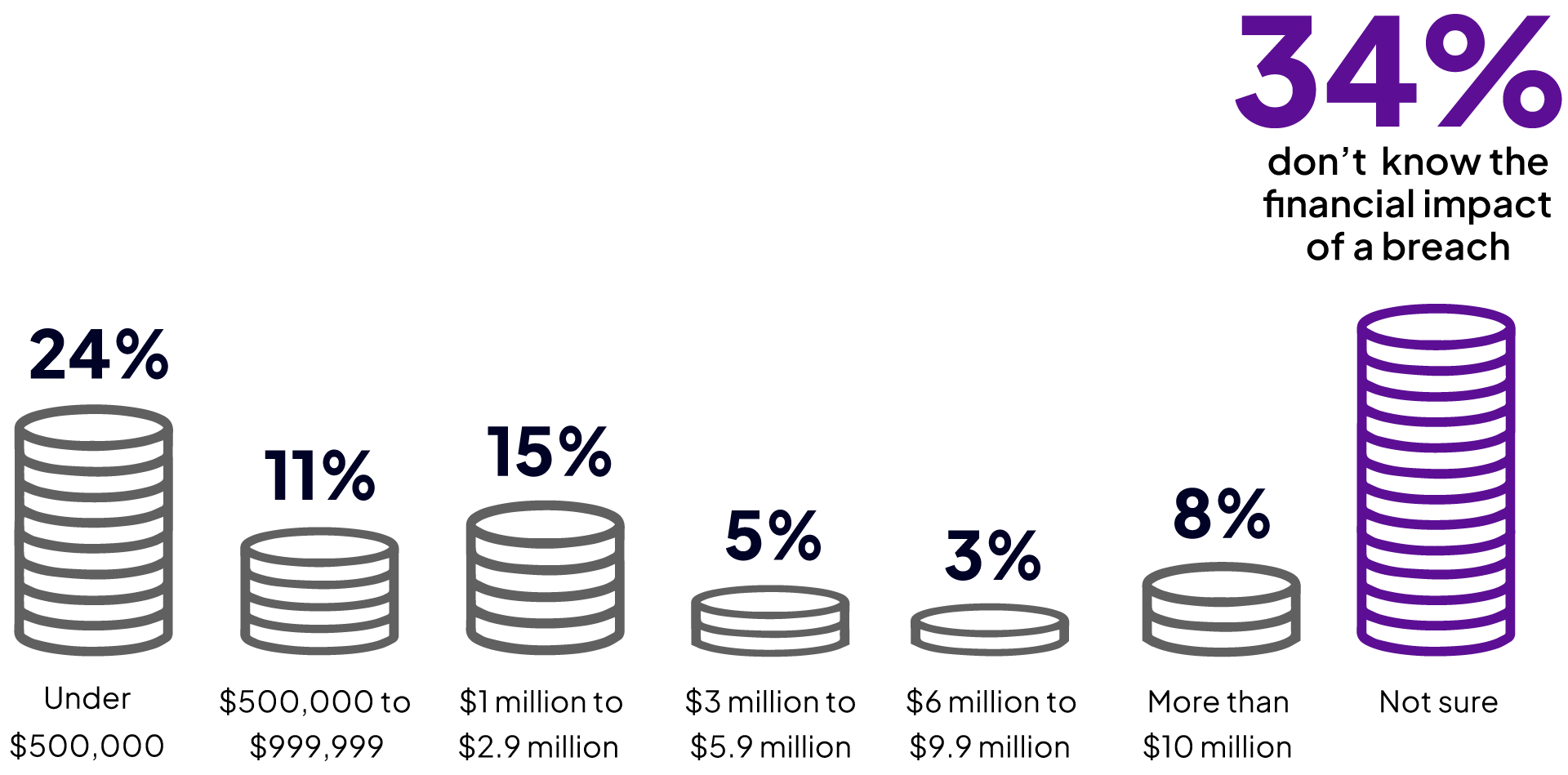
THREAT HUNTING GOALS
Organizations highlight a broad range of goals for their threat hunting program. Reducing exposure to internal threats was named by more than half of the organizations (53%). This is followed by improving the speed and accuracy of threat response (50%) and reducing the attack surface (46%).
What are the primary goals of your organization’s threat hunting program?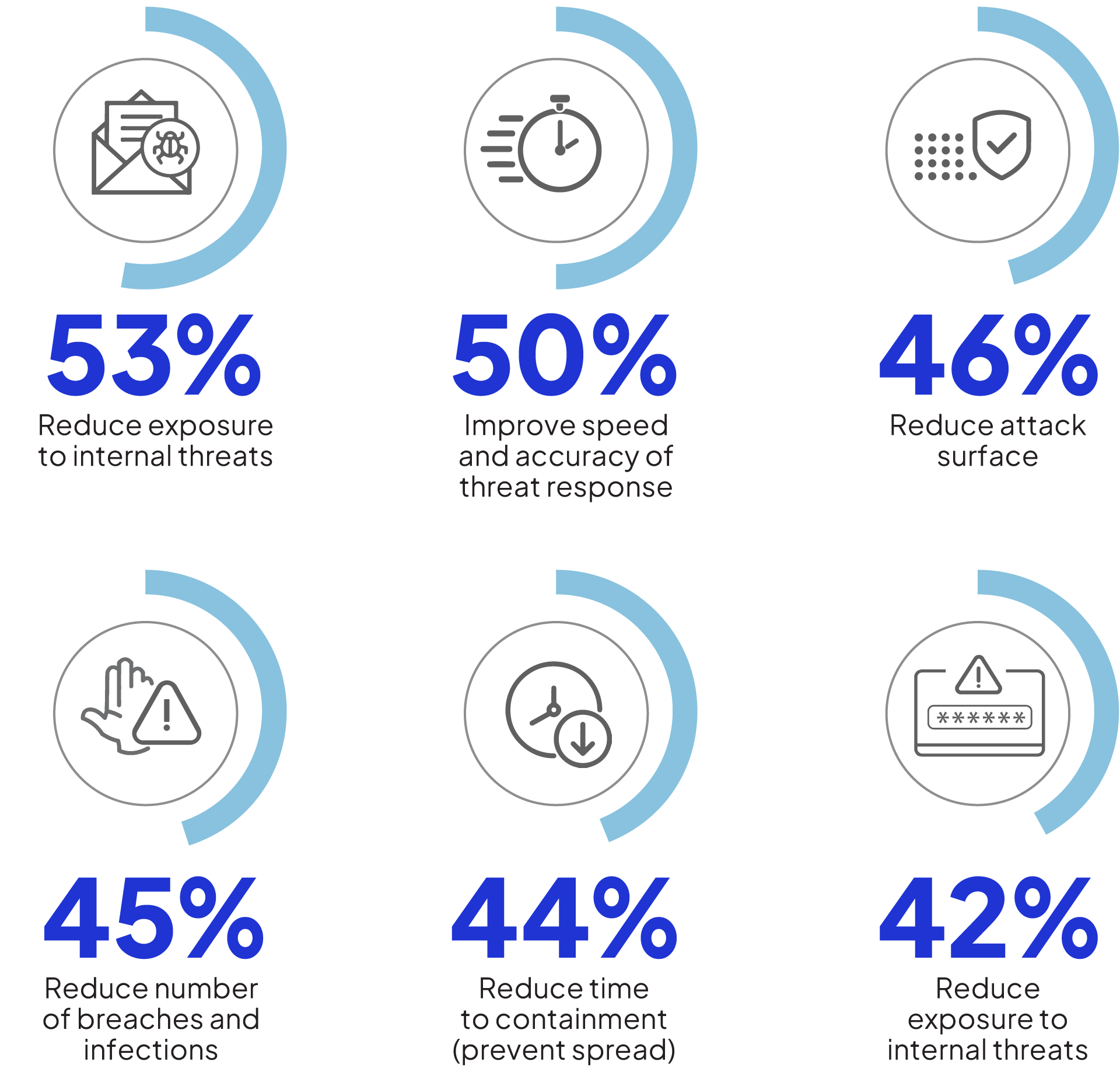
VALUABLE DATA SOURCES
Activity logs (29%) and threat intelligence feeds (26%) lead the list of most valuable data sources for investigating known threats. Given the shift to remote work, endpoint data is also high on the list of valuable data sources (22%).
What is the most valuable data source for your organization when threat hunting or investigating known threats?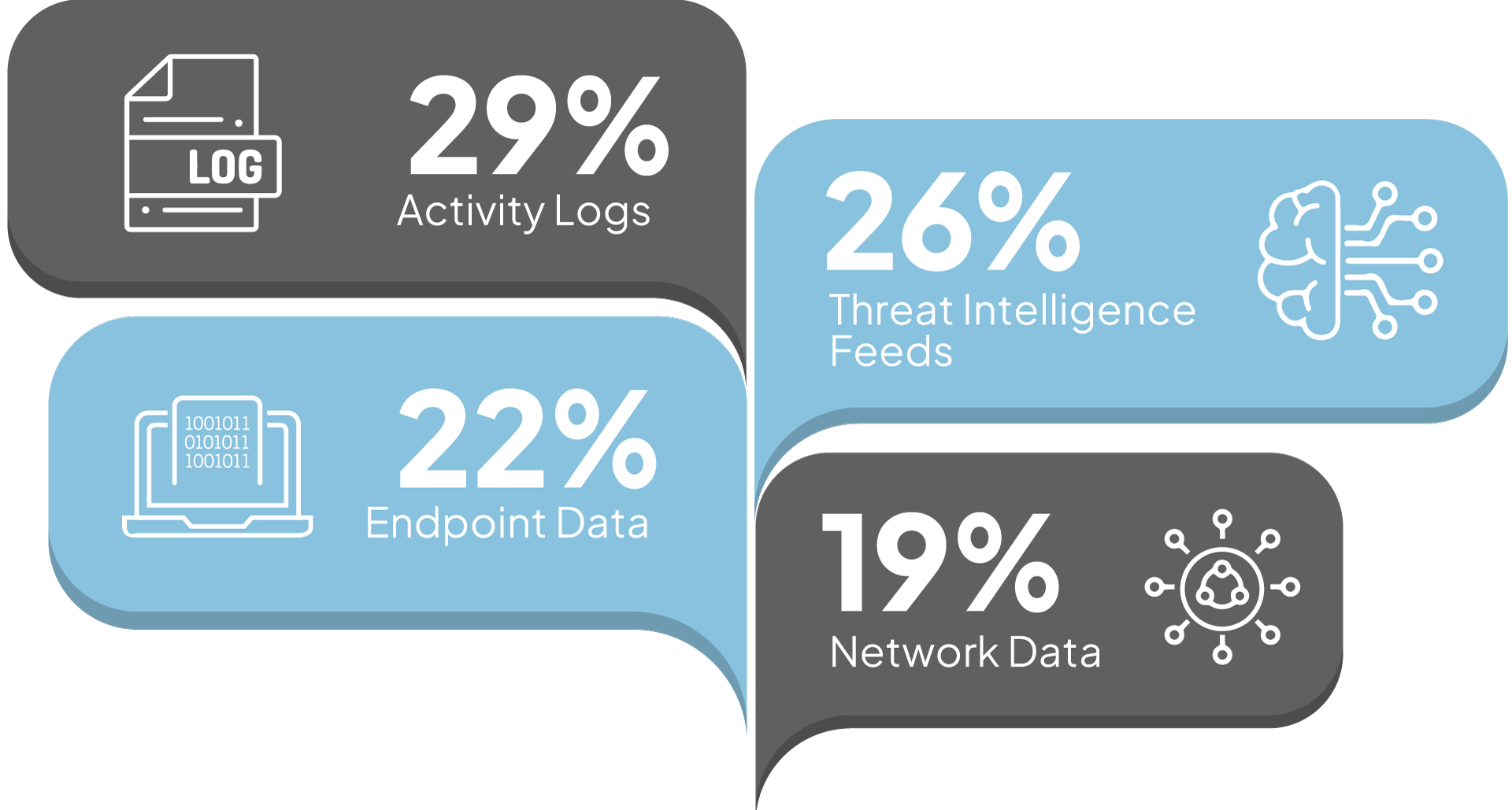
THREAT HUNTING TOOLS
There is a diverse portfolio of technology tools for threat hunting. Threat intelligence is the most critical capability to have (62%), along with automatic threat detection (57%).
What capabilities do you consider most important regarding the effectiveness of a threat hunting tool?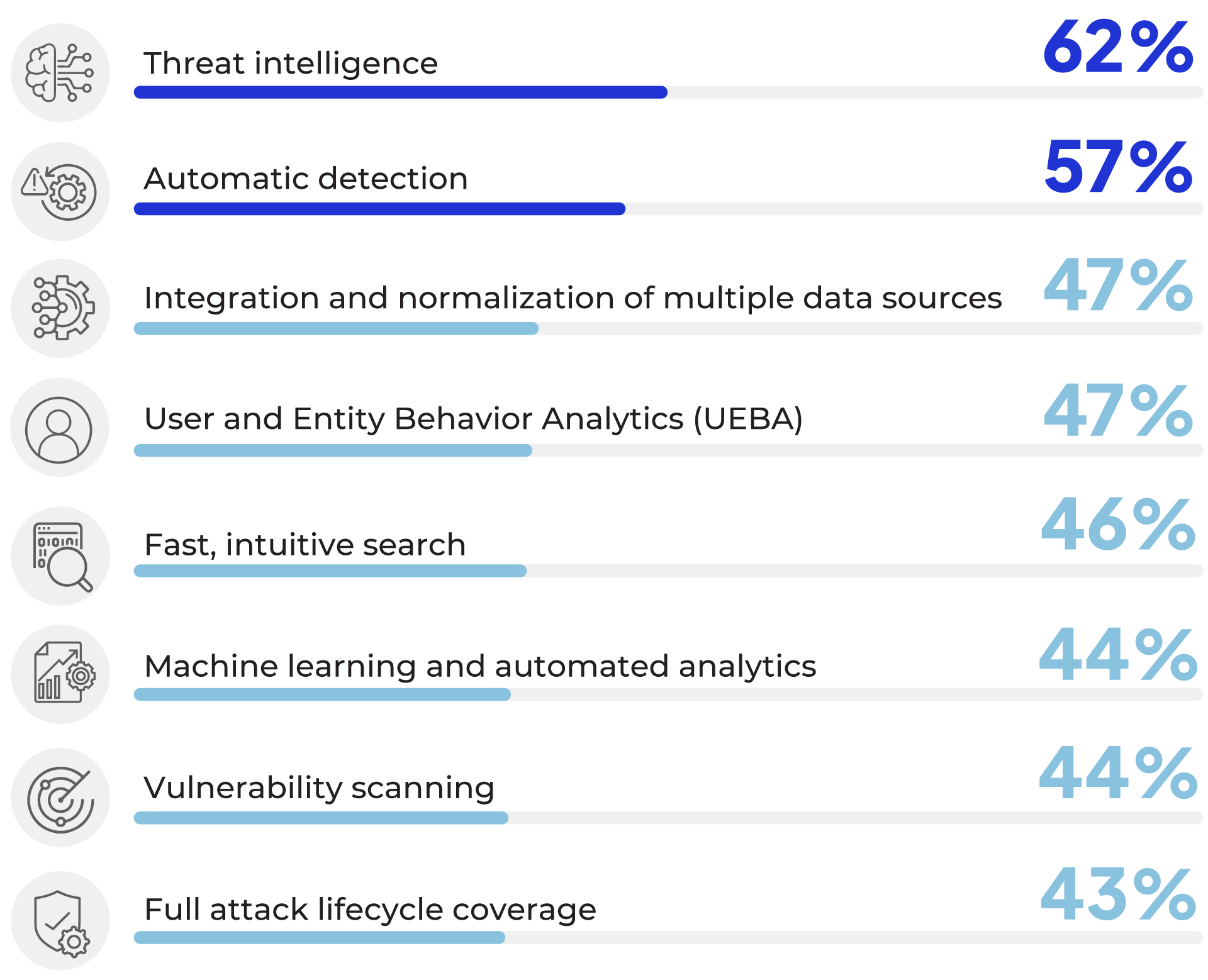
THREAT INDICATORS
We asked threat hunters what threat indicators they most frequently investigate as part of their daily missions. The most common threat is behavioral anomalies (76%), followed by suspicious IP addresses (64%) and denied/flagged connections (55%).
What kinds of indicators are most frequently investigated by your hunt team?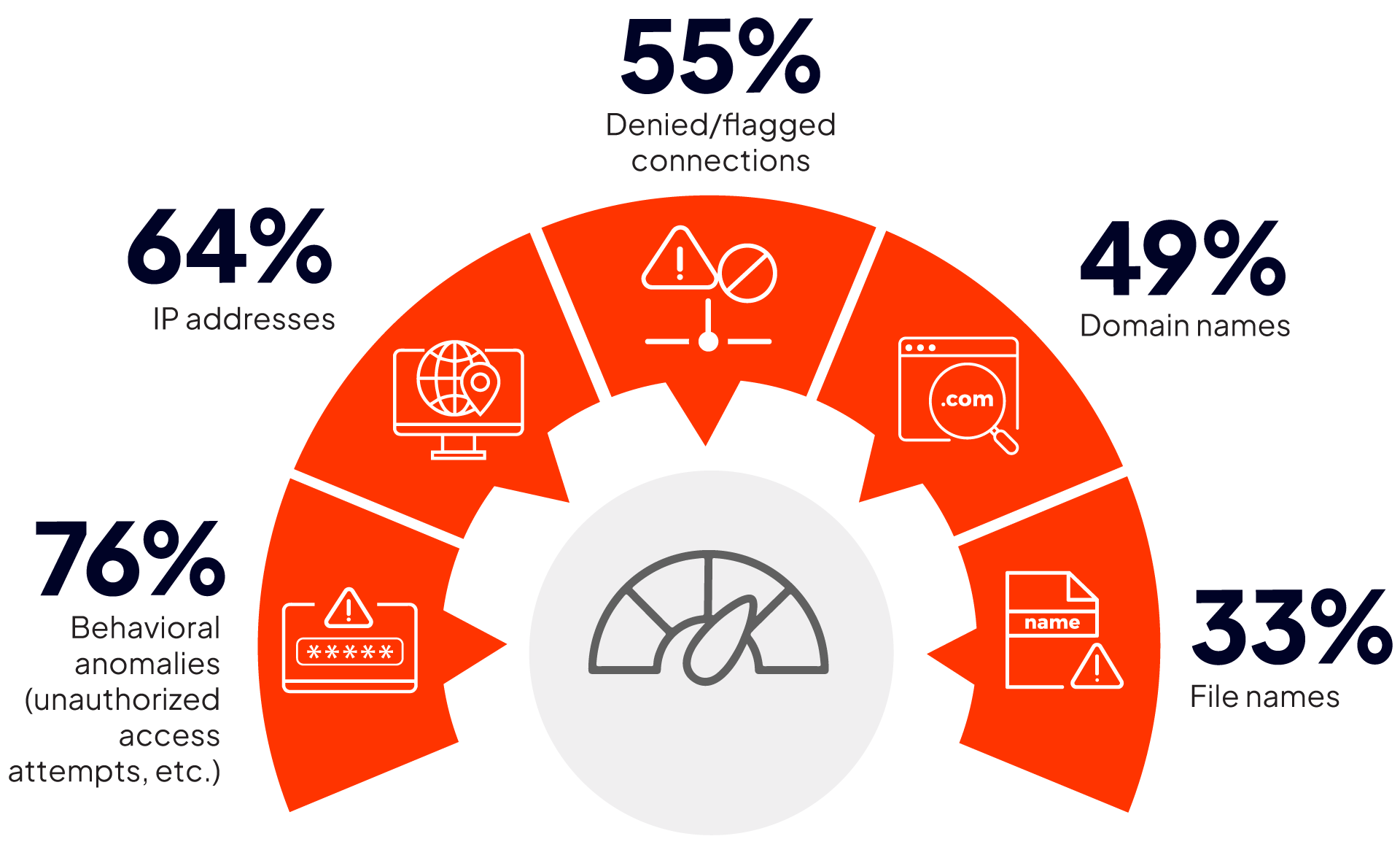
INSIGHTS INTO ADVERSARIES
Threat hunting can provide valuable insights into adversary infrastructure and allow organizations to become more proactive. Through threat hunting, 60% of organizations in our survey identify actionable indicators of compromise while 58% generate rule sets or alert automations on future similar activity. Fifty percent of organizations find threat hunting produces a deeper understanding of adversary behavior and trends.
What are the most useful insights into adversary infrastructure that threat hunting produces?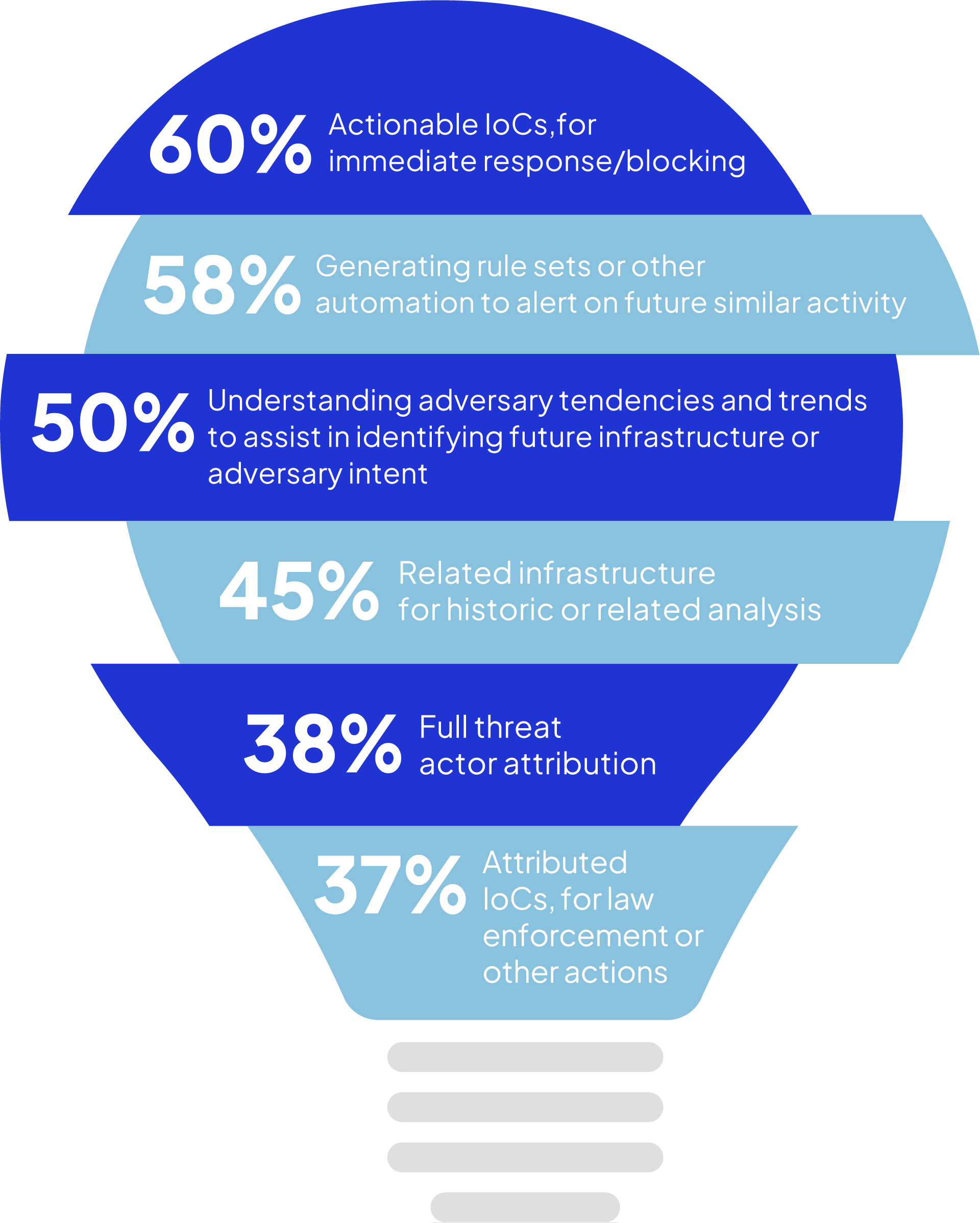
METHODOLOGY & DEMOGRAPHICS
This Threat Hunting Report is based on the results of a comprehensive online survey of 335 cybersecurity professionals conducted in September 2022 to gain deep insight into the latest trends, key challenges, and solutions for threat hunting management. The respondents range from technical executives to managers and IT security practitioners, representing a balanced cross-section of organizations of varying sizes across multiple industries.
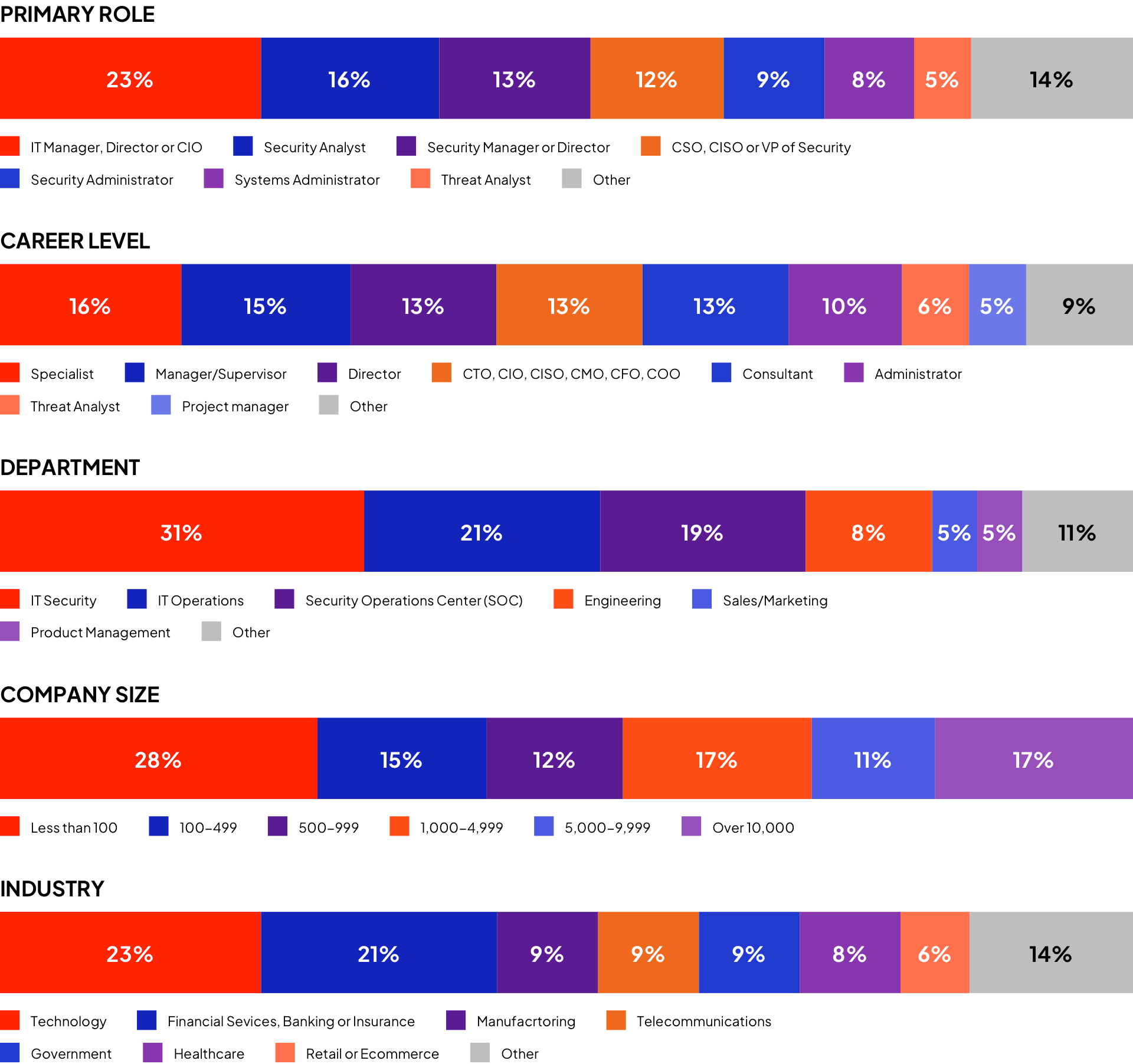

Intrusion combines network visibility, advanced threat intelligence, and automated detection and response to help security teams know what threats are active in their environment while staying protected. The Intrusion Global Threat Engine powers everything we do and contains historical data, known associations and reputation intelligence of over 3 trillion IPs, domains, and hostnames. Our threat hunting device, Intrusion Shield, observes traffic flow and instantly blocks known malicious or unknown connections from both entering or exiting your network, making it an extremely effective solutions for preventing Zero-Day and ransomware attacks.
See the unseen and know the unknown with Intrusion.
Copyright © 2022 Cybersecurity Insiders. All Rights Rerserved.
Report contents can be quoted by third parties with a source reference that the report was produced by Cybersecurity Insiders, and adding a link to www.cybersecurity-insiders.com